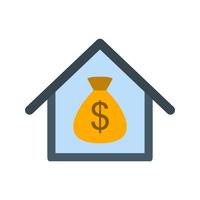
I’m trying to build my audience, so if you like this post, please share it on social media using the buttons right above.
Sometimes it’s easy to think the way to amass wealth is with grand slams or 80-year touchdown passes (or what ever analogy you want to use for that big move). In financial terms it’s getting a $500k job or picking the next stock that will double in a month. But I think the opposite. Those big wins are rare and people can waste a lot of time and effort and money chasing them.
Rather, the best way to amass wealth is the little wins (the single hit or the 4-yard run up the middle). In personal finance those “little wins” are things like we talk about here a lot: lowering your costs, saving small amounts every paycheck, making sure you get the 401k match.
Recently, the Fox family got another small win which will add up to something very large. We are in the process of refinancing our mortgage. It’ll save us a little bit each month but that will add up to an enormous amount when it’s all said and done.
Two years ago, the Fox family moved to Charlotte. We bought a wonderful home, and like most people, used a mortgage to pay for it. Also, as with most people, our monthly mortgage payment is our single largest expense.
Over the past two decades, interest rates have been at all-time lows, and that means that mortgage rates have similarly been at all-time lows. When I first purchased a home in 2006 my mortgage interest rate was 6% and everyone was talking about how incredibly low rates were. Fast forward 15 years and rates have been cut in half (or even lower).
To the point, we are in the process of refinancing as we speak, at this very moment.
When to refinance
The decision to refinance really comes down to a decision of taking on a little pain now (in terms of closing costs and other fees associated with the new loan) for a lot of benefit later (in terms of lower interest rates).
For us we had the following stats for our current mortgage:
| Mortgage amount | $800,000 |
| Interest rate | 3.65% |
| Years | 30 |
| Monthly payment | $3,781 |
The simple math tells you that we’re paying about $30,000 a year in interest, or about $2,400 each month. That seems like a really big number. Even decreasing that a little bit could really move the needle.
Doing some back-of-the-envelope math, knowing rates were around 3%ish, I could save about $5,000 a year or about $400 a month. Definitely that seemed worth it, at least to start the process.
I filled out a loan application on line and got bombarded by a ton of people offering mortgages. After sorting through all the messages and picking the one or two that seemed best, I went through a process that all-in took about 10 hours of work plus sending a bunch of emails.
Ultimately, we got a 3% rate for closing costs of about $6,000. This is taking candy from a baby. It’s hard to imagine finding a better deal. I’ll be charged $6,000 today (and I won’t even really pay it because it will be rolled into my new mortgage), for the ability to save $5,000 this year and every year after. Easy money.
Going with a shorter mortgage?
We will be refinancing with another 30-year mortgage. We could have gone with a 15-year mortgage and that would have knocked our rate down to about 2.88%. Certainly, a lower rate is good, about $80 per month in savings. However, it requires a larger monthly payment. We could afford it, but I definitely think we can do better by investing that money.
In fact, that’s the same playbook I used to get my car for free.
So we went with a 30 year mortgage.
Going with an ARM?
The other option we had was to do an adjustable rate mortgage. The way these work is they give you a really low rate for five years (hence a 5-year ARM), but after that the rate can adjust, almost always up.
We have used these in the past, both in Los Angeles and Greensboro, and it turned out both times that was the right decision. ARMs make sense if you think interest rates will stay low, or you think you’ll move before the ARM is up. For us, in the past, we moved before the ARM was up, so taking the lower rate worked.
Now, we are pretty well settled in our home so we don’t plan on moving until Mini Fox graduates high school (10 years away). Also, it seems very unlikely that rates will stay this low. Most people, me included, expect rates to go up. For all those reasons, we didn’t do an ARM.
That left a traditional 30-year fixed mortgage, and that’s what we went with.
To pay points or not?
The final decision was whether we should take the normal rate or “pay points” to get a lower rate. What this means is we could take the 3% rate and pay the normal closing costs ($6,000). Or we could pay extra closing costs (about $7,000 extra, making the total closing costs $13,000) and get a rate all the way down to 2.65%.
This may seem more complex but it’s still a fairly straight-forward calculation. Just doing the regular refinance would reduce our monthly costs about $400 per month, so we’d “pay off” our closing costs in a bit over a year. No brainer.
By paying the extra points, we lowered our rate an additional 0.38% or about $150 each month. Of course that cost us $7,000, so it would take us about 46 months to “pay off” the extra points for the lower rate.
Four years may seem like a long time, but then you remember that it’s a 30-year mortgage, and it doesn’t seem that long. Even if we sell in 10 years, we’re still well ahead of the game.
That’s our story. We’re going with a 30-year mortgage with closing costs of about $13,000 but that will lower our monthly payment about $600. Like I said, taking candy from a baby.
And if you really want to nerd out, if I assume that I can invest that $600 each month in the stock market at historic averages, after the 30 year mortgage is done, I’ll have a tidy $730,000!!! That’s almost as much as the mortgage itself. Not bad.
